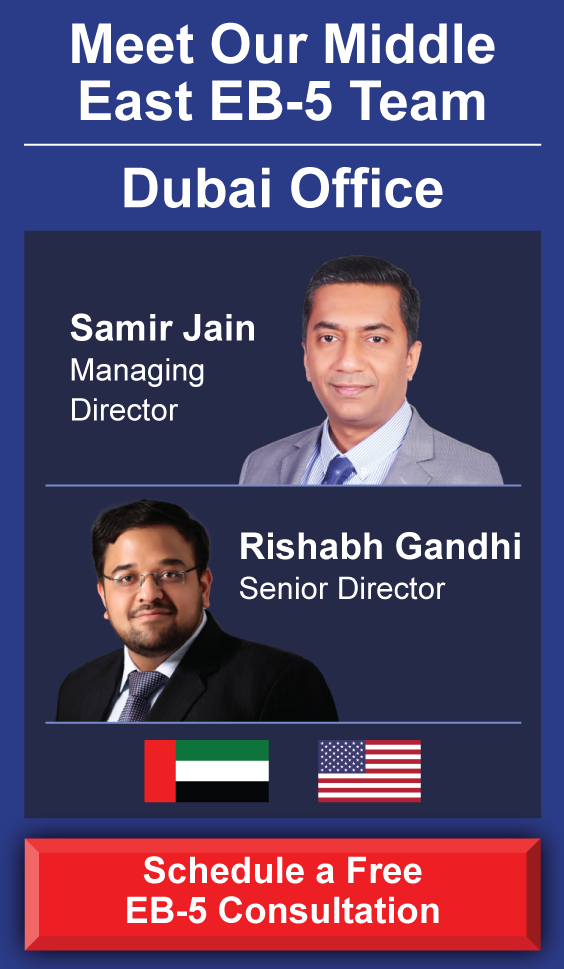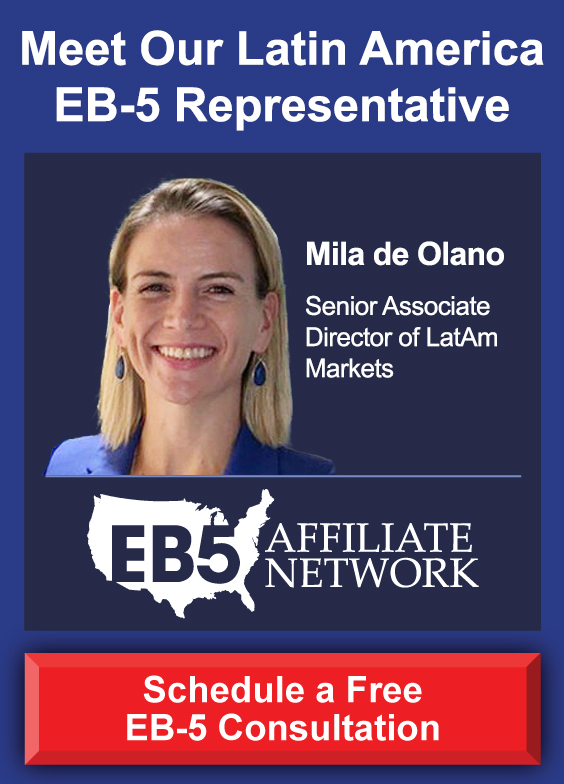Since its inception in 1990, the EB-5 Immigrant Investor program has helped thousands of investors obtain a U.S. permanent resident visa, also known as a Green Card. Investors get a Green Card in exchange for investing in a new commercial enterprise (NCE) in the United States.
The main goal of the EB-5 Program is to promote economic growth by injecting foreign investment capital into U.S. businesses. But the EB-5 immigration process is complex. An investor who tries to navigate this process without performing due diligence puts his or her money and immigrant status at risk. As a result, the EB-5 due diligence process is usually carried out with the help of an immigration attorney.
In this article, we outline the risks involved with investing in an EB-5 project and explain how EB-5 visa applicants can carry out due diligence to find the safest investment opportunities.
What Are the Risks Involved in Making an EB-5 Investment?
Evaluating Immigration Risks in EB-5 Projects
- The EB-5 Project’s Financial Cushion
- Projected Job Creation
- The Job Creation Timeline
- TEA Designation
- The Business Plan
- The Regional Center Sponsor
Evaluating Financial Risk in the EB-5 Investment Process
- Review the Track Record of the Entities Involved in the EB-5 Project
- The Disbursement Process for EB-5 Funds
- How Much Capital is Coming from EB-5 Investors?
- How Much Project Capital is Coming from Developer Equity?
Evaluating Projects with Risks in Mind
- 1. Is the EB-5 Project Likely to be Completed Successfully?
- 2. Can the Project Create and Maintain the Required Amount of Jobs?
Due Diligence is Essential for EB-5 Investors
What Are the Risks Involved in Making an EB-5 Investment?
There are two categories of risk involved in making an EB-5 investment: immigration and financial risk.
Immigration Risk
EB-5 investors are not guaranteed to obtain visas. An investor’s immigration success depends on the financial performance of their project and its compliance with EB-5 program regulations.
For instance, if an EB-5 investment project fails to create at least 10 jobs for U.S. workers, its investors will not qualify for visas.
Financial Risk
Financial risk involves the possibility that an EB-5 investor will not receive a timely return on their investment capital. This scenario may occur if an EB-5 project is unable to remain solvent throughout its investors’ immigration process or if it is unable to repay the investment capital.
Evaluating Immigration Risks in EB-5 Projects
In this section, we take a look at key points to consider when evaluating the immigration risk of an EB-5 project.
The EB-5 Project’s Financial Cushion
A financial cushion enables the project to continue operating even if it does not obtain the projected amount of EB-5 capital. Projects with funds from non-EB-5 sources, such as through equity or loans, have a greater financial cushion and lower immigration risk for investors.
Even in a case where not all of the EB-5-sourced funds are obtained, the project will still be adequately funded. Projects that rely heavily on EB-5 funding are more likely to experience a capital shortfall, leaving investors unable to receive their Green Cards.
Projected Job Creation
To qualify for a Green Card, EB-5 investors must prove the EB-5 Project is a job-creating entity and that their funding has led to the creation of at least 10 jobs. An EB-5 Project that aims to create no more than 10 jobs per investor is at risk of falling short of the employment requirement. Unexpected financial difficulties or construction delays could leave investors without their Green Cards.
In contrast, EB-5 Projects that aim to create significantly more jobs than the minimum requirement are safer options. Certain EB-5 Projects can more readily create a job cushion than others, such as those that include construction jobs; purchasing materials and other construction costs can help meet the job creation requirement.
The Job Creation Timeline
EB-5 Projects must not only create enough jobs, but they must also create them within a certain time frame. Directly created jobs (W-2 positions on the company’s payroll) must be sustained for at least two years.
As part of proper EB-5 due diligence, investors should look for projects with feasible job creation forecasts that can be sustained for the required timespan.
At the same time, construction jobs that were created from other forms of financing before the EB-5 investment was made can often count toward the investors’ job creation.
TEA Designation
EB-5 Projects located in targeted employment areas (TEAs) can accept a reduced investment requirement of only $800,000, while non-targeted employment area projects require a minimum investment amount of $1,050,000.
Many reliable EB-5 Projects, especially those sponsored by regional centers (see below), are located within targeted employment areas.
The Business Plan
United States Citizenship and Immigration Services (USCIS) analyzes each EB-5 Project’s business plan to determine whether it will succeed financially and create the necessary jobs. Investors must provide a highly detailed, comprehensive, and credible business plan and a business risk analysis to convey this information as efficiently and clearly as possible.
The main points the USCIS will analyze on a project’s business plan involve how it will create and sustain enough jobs, the marketing and operations plan to ensure financial success, and how the project will maintain the at-risk status of the EB-5 funding.
Under USCIS regulations, all EB-5 investment capital must be irrevocably invested in the project. Investors can receive no contractual right to repayment of their capital and must be liable to either financial gains or losses.
A business plan must also comply with the requirements established in the 1998 Matter of Ho ruling. It must demonstrate that the project will promote economic growth and job creation.
The Regional Center Sponsor
The EB-5 Regional Center Program offers a convenient and popular investment model for an EB-5 investor. Instead of investing directly in an EB-5 Program, they can do so through USCIS-sponsored entities known as regional centers. An entity receives regional center designation to manage EB-5 investment funding across several projects.
Since a regional center project is allowed to count indirect employment—jobs that result from the project’s economic impact—toward the job creation requirement for each investor, this investment model is the most common among EB-5 visa applicants.
After carrying out due diligence, most investors choose projects sponsored by regional centers. Of course, investors should perform due diligence on the management team of each potential regional center.
The USCIS requires each regional center to provide detailed background information on each of its managers, and any individuals previously involved in fraud may be banned from participating in the regional center program.
Moreover, regional centers must submit annual financial reports and a due diligence report to their investors. Examining the regional center’s track record is a key step in the due diligence process.
The regional center program must be reauthorized periodically by Congress. This was most recently revalidated on June 24, 2022. All regional center investors who file Form I-526E on or before September 30, 2026, will have their petitions adjudicated even if the regional center program lapses again.
Evaluating Financial Risk in the EB-5 Investment Process
To reduce their financial risk, EB-5 investors must, before project approval, evaluate each project developer’s track record, the exit strategy for investors, and capital structure.
Review the Track Record of the Entities Involved in the EB-5 Project
After an EB-5 investor makes their investment, the funds will be fully managed by the project in which they invest and its regional center sponsor (if any). This makes it critical for an investor to evaluate the track record of the project developer and regional center to protect their funding and make sure it will be used for legitimate job-creating purposes.
There are several areas to cover when reviewing an EB-5 entity’s track record. These include the following:
- The project developer’s total development experience.
- The number of projects the project developer has successfully completed.
- Any prior loan defaults.
- The developer’s experience with the regional center sponsoring the project.
- Current involvement in litigation.
- How much equity capital has the developer made available?
The Disbursement Process for EB-5 Funds
Knowing how the investment capital will be disbursed to the EB-5 Project is crucial for managing financial risks. Many projects, particularly those sponsored by regional centers, use an escrow arrangement to store the funds until the investor has filed Form I-526E, the first visa petition in the EB-5 process.
As there are various methods a project developer can use to release investment funds from escrow and into the project, investors must decide on one most favorable for them.
While some investors may prefer that their entire investment remains in escrow until Form I-526E is approved, such an arrangement would mean that the capital necessary for project development would not be available for months or even years. It may also be considered a violation of the at-risk requirement.
How Much Capital is Coming from EB-5 Investors?
Some projects source a large percentage of their capital structure from EB-5 investments, while others only use EB-5 investments to fund a relatively small portion of the project. In the latter’s case, the remaining capital is acquired from other sources, such as bank loans.
Projects that obtain a senior loan with a major U.S. bank are typically safe options. Investors are encouraged to avoid projects that source most of their capital from EB-5 investments. If there is an EB-5 capital shortfall, the project will likely be unable to reach completion and create the required jobs for its EB-5 visa applicants.
How Much Project Capital is Coming from Developer Equity?
Developer equity is the amount of capital made available to the project by its developer. The majority of U.S. financial institutions require developer equity to make up at least 15% of the total project capital. EB-5 investors are advised to steer clear of projects that do not have a significant amount of irrevocably committed funds from the developer.
Evaluating Projects with Risks in Mind
When evaluating projects, investors should always keep two questions in mind:
- Is the project likely to be successfully completed?
- Can the project create and maintain enough jobs?
This EB-5 diligence is crucial to reducing immigration risk for investors and their potential investments.
1. Is the EB-5 Project Likely to be Completed Successfully?
A successful EB-5 Project will result in economic growth, employment creation, and, ultimately, EB-5 visas for its investors.
For an EB-5 project to see successful completion, it must:
- Use the investment capital as outlined in the offering documents.
- Stay on schedule and avoid delays in construction or job creation.
- Stay within the margin of expected costs.
A successful project will have a financing backup plan in case it experiences a shortfall of EB-5 investment capital. These alternative funding sources can include developer equity and loans. In many cases, the backup plan will not be necessary for project completion.
2. Can the Project Create and Maintain the Required Amount of Jobs?
Every successful EB-5 project must lead to the creation of at least 10 jobs per EB-5 investor. If these will be direct W-2 positions on the project’s payroll, they must also be sustained for at least two years. This is a crucial factor determining an EB-5 investor’s immigration success.
Direct positions often come from construction or from operations. However, as mentioned above, regional center-sponsored projects can use econometric modeling to calculate job positions resulting from the project’s overall economic impact.
Due Diligence is Essential for EB-5 Investors
Through proper EB-5 due diligence and informed investment decisions, investors can identify the safest EB-5 new commercial enterprise and significantly minimize their financial and immigration risk.
Consulting with an EB-5 immigration attorney and, possibly, a financial advisor is also recommended. As a leader in the EB-5 investment field, EB5AN has helped thousands of investors find low-risk EB-5 investment opportunities.
Foreign nationals interested in the EB-5 program and who would like investment advice can take the next step by booking a call with EB5AN to learn more.
Directory of Information
For further insights into the EB-5 Project and its benefits as well as the considerations you need to take into account when investing, take a look at our directory of articles and information below:
How to Select a Safe EB-5 Project
A Simple Investment Framework for Selecting a Low-Risk EB-5 Project
The Ultimate Due Diligence Guide for EB-5 Investors for 2022
The Importance of Due Diligence for EB-5 Investors
What the EB-5 “At Risk” Requirement Means
Immigration Risk and Financial Risk in EB-5 Investment
How to Find a Financially Strong EB-5 Project and Get a Timely Return of Your EB-5 Investment Funds
Why EB-5 Investors Should Avoid Projects Without Secured Financing
Understanding Indirect Job Creation for the EB-5 Program
What Does Indirect Job Creation Signify in the EB-5 Investment Program?
New Limits on Indirect Job Creation: How EB-5 Construction Projects Can Adapt
Why You Should Invest In an EB-5 Targeted Employment Area Project
Determining TEA Status When There’s No TEA Designation Letter
TEA Designation and Its Benefits to the EB-5 Industry
Creating an EB-5 Compliant Business Plan
EB5 Investments: The Importance of Retaining Separate Legal Representation
Things to Consider Before Choosing an EB-5 Investment
EB-5 Projects – Which size is right for you
EvaluatingRegional Center Investment Opportunities
Protect Your EB-5 Investment – Choose the Right Regional Center
Why Should You Invest in an EB-5 Project Through a Regional Center?
Advantages of Investing in Regional Center EB-5 Projects
Selecting an EB-5 Project: Factors to Consider
EB-5 Visa Investments: 5 Frequently Asked Questions
EB-5 Investors Create TEAs with Adjacent Census Tracts
Justifying TEA Designation: What Data EB-5 Investors Use and How
What Are the Immigration Concerns When an EB-5 Project Defaults?
Employment Creation in the EB-5 Program
How to Invest in an EB-5 Project Safely
Tips for Choosing a High-Quality EB-5 Regional Center
What is an EB5 Regional Center?
The Benefits of Rural EB 5 Projects
What Makes a Good EB5 Regional Center?
Best and Worst Locations and Asset Classes for EB-5 Projects at $800K
How to Choose a Reliable EB-5 Project Developer
How to Select An EB-5 Immigration Attorney
Avoiding Conflicts of Interest Between EB-5 Immigration Attorneys and Regional Centers
Keep EB-5 Investments Safe Amid Bank Failures: How EB5AN Protects Investors’ Funds in Escrow
Selecting a Safe EB-5 Project: Three Red Flags to Avoid
Rural EB-5 Projects and Natural Disasters: How to Mitigate the Risk
How can EB-5 investors make sure that a project is a good investment?
How can potential EB-5 investors find active projects?
How can EB-5 investors make sure that their investments will succeed?
How should investors go about performing due diligence on an EB-5 regional center project?
How can potential EB-5 investors find available projects?
How can an investor determine if a project site is inside a targeted employment area (TEA)?
What is an I-924 application, and how does it affect EB-5 projects and investors?
How should investors evaluate potential EB-5 projects?
How likely is it that an EB-5 investor’s principal investment will be returned?
Can an EB-5 investor split an investment between two businesses?
Can the purchase of an apartment work as an EB-5 investment?
Can a foreign national make an EB-5 investment into a family business?
How quickly can an investor obtain an EB-5 visa and enter the United States?
What criteria must an existing company meet to qualify as a new commercial enterprise (NCE)?
How secure are EB-5 investments?
What are the benefits of investing in a project that already has some approved I-526 petitions?
Can an EB-5 investor invest in a project that already has I-526 approvals?











